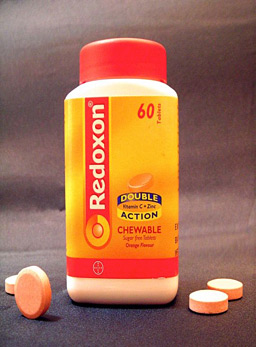You can use percent composition to help you determine the empirical and molecular formulas of compounds.
![]() Review what an empirical formula is by viewing the video.
Review what an empirical formula is by viewing the video.
Source: What is empirical formula, trackerchem, YouTube
After watching the video, let's apply what you learned to the coin compound. The coin compound is made of 3 dimes (D), 3 nickels (N), and 3 quarters (Qu). The molecular formula of the compound is D3N3Qu3. Since the amount of all the elements can be divided by 3, the empirical formula for the coin compound is DNQu.
Now you try it out! Determine the empirical formula for each compound listed. If you have the molecular formula, you can determine the empirical formula the same way as above with the coins.
What is the empirical formula of glucose, C6H12O6?
What is the empirical formula of hydrogen peroxide, H2O2?
You can determine a compound's empirical formula if you have the percent composition of a compound. Follow these 4 steps to convert the percent composition to the empirical formula.
Step 1: Assume you have 100 grams of the substance. This makes the math easier with the percents.
Step 2: Exchange the % sign with the unit of grams.
Step 3: Convert the grams to moles for each element.
Step 4: Find the smallest whole number ratio of moles for each element.
Let's try an example.

Source: Vitamin C, Jrockley, Wikimedia Commons
Vitamin C is made of 40.90% carbon, 4.58% hydrogen, and 54.52% oxygen. Use the percent compositions of the elements to determine the empirical formula of Vitamin C.
Change the % signs to grams. In your notes, write down the grams of carbon, hydrogen, and oxygen. You should have written 40.90 grams of C, 4.58 grams of H, and 54.52 grams of O.
Convert the grams to moles. Write down your conversions in your notes. You should have written:
moles C = 40.90 grams C * 1 mol C ÷ 12.01 grams C = 3.41 mol C
moles H = 4.58 grams H * 1 mol H ÷ 1.01 grams H = 4.53 mol H
moles O = 54.52 grams O * 1 mol O ÷ 16.00 grams O = 3.41 mol O
Find the simplest mole ratios. Write down your conversions in the your notes. You should have written:
C: 3.41 mol / 3.41 mol = 1.00
H: 4.53 mol / 3.41 mol = 1.33 or 4/3
O: 3.41 mol / 3.41 mol = 1.00
Since hydrogen's ratio is not a whole number, you must find a number to multiply the ratio by to get a whole number. If we multiply 4/3 by 3, you will get a whole number. For example:
four thirds 4 3 × three over one 3 1 = twelve over three 12 3 = 4
Since you multiplied hydrogen's ratio by 3 to make it a whole number, you have to multiple each ratio by 3.
C: 3.41 mol / 3.41 mol = 1.00
H: 4.53 mol / 3.41 mol = 1.33 or 4/3
O: 3.41mol / 3.41mol = 1.00
1.00 * 3 = 3
4/3 * 3 = 4
1.00 * 3 = 3
This leaves you with the ratios: C:3, H:4, and O:3.